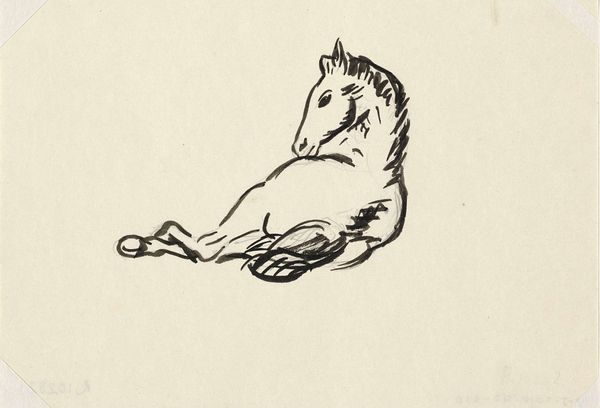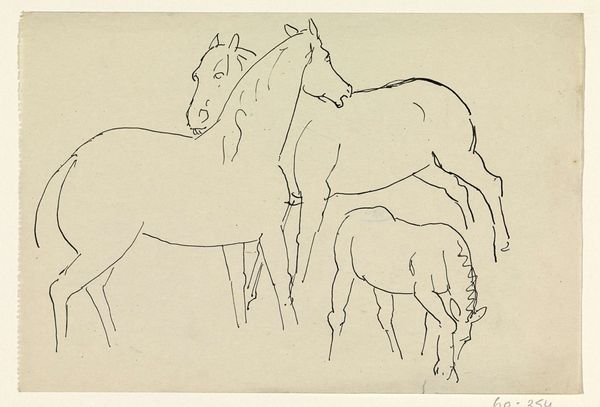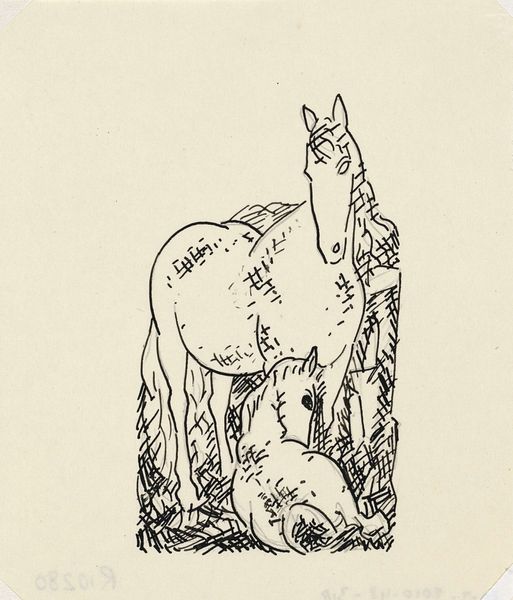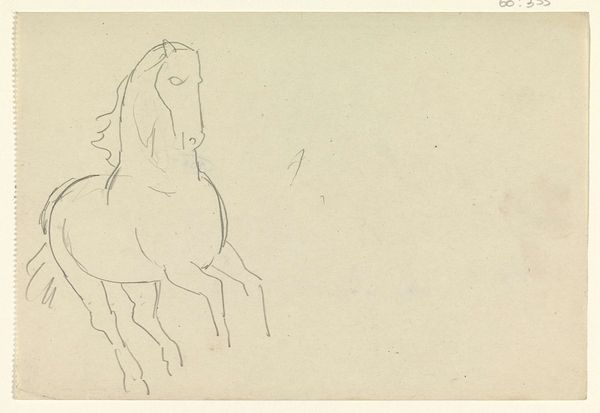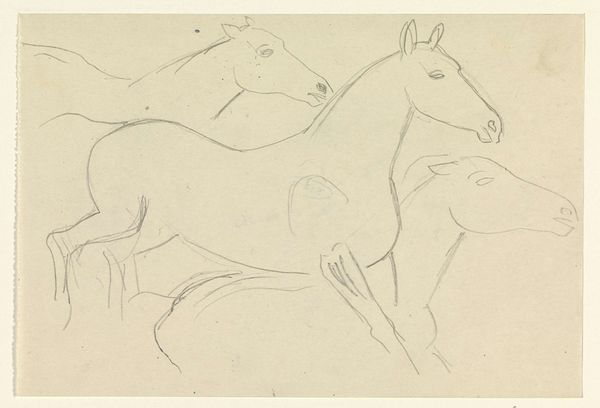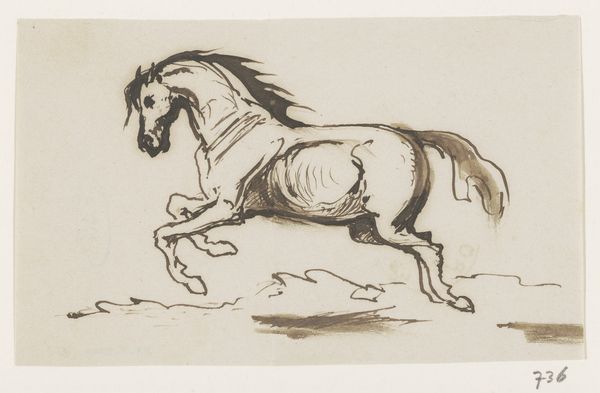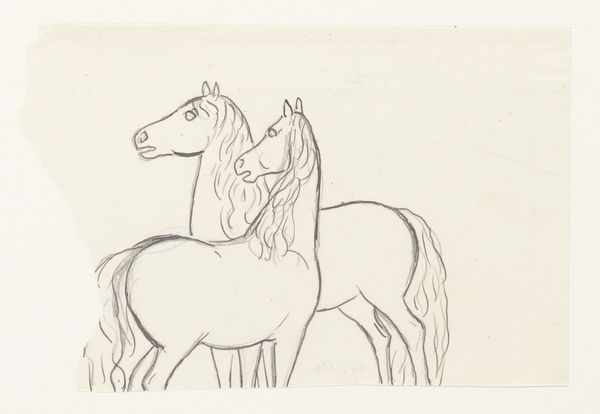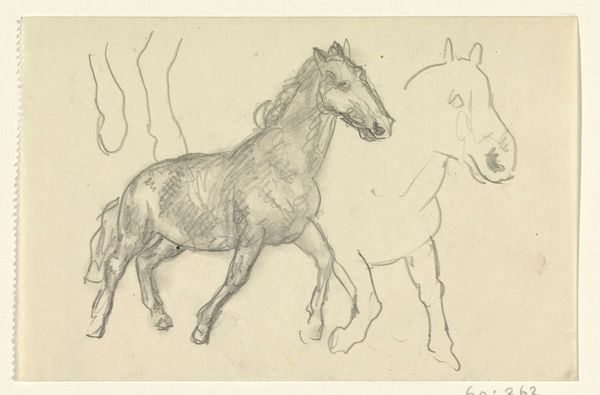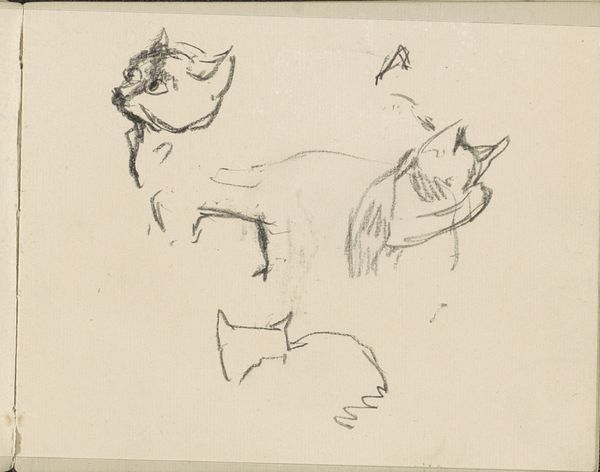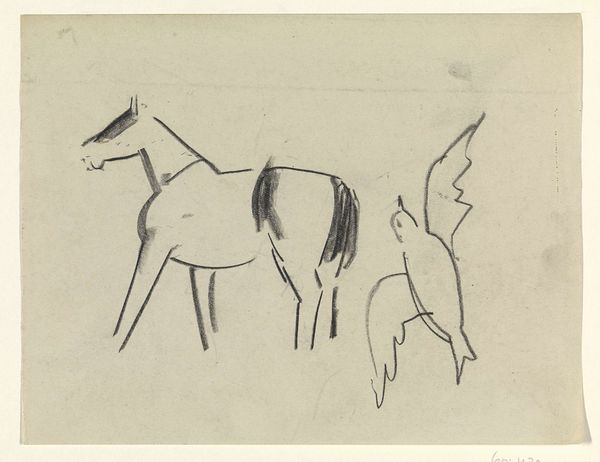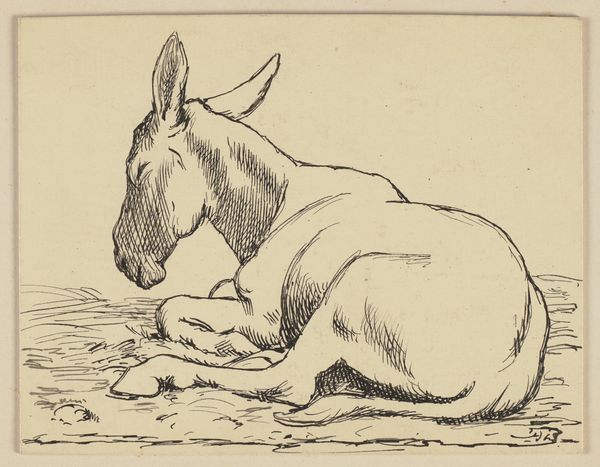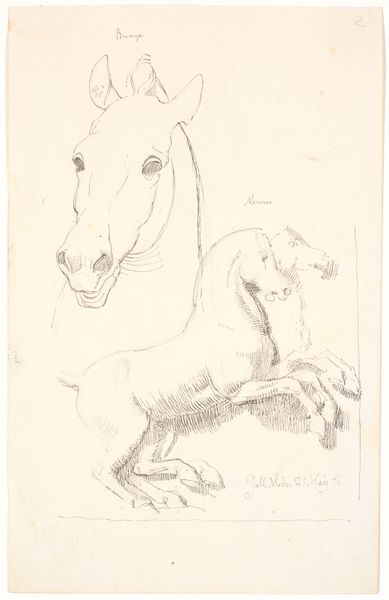
drawing, ink, pencil
#
portrait
#
drawing
#
imaginative character sketch
#
animal
#
pen sketch
#
cartoon sketch
#
figuration
#
personal sketchbook
#
ink
#
idea generation sketch
#
ink drawing experimentation
#
pen-ink sketch
#
pencil
#
horse
#
line
#
sketchbook drawing
#
fantasy sketch
#
initial sketch
Dimensions: height 134 mm, width 195 mm
Copyright: Rijks Museum: Open Domain
Curator: The artwork before us is titled "Zonder titel (twee schetsen liggend veulen)," created by Leo Gestel between 1935 and 1936. It’s an ink and pencil drawing currently housed in the Rijksmuseum. Editor: The sketches are so delicate, yet the bold lines give them a strong presence. The foals look so peaceful, almost melancholic. What do you see in this piece, beyond the surface depiction of animals? Curator: Gestel created this in the lead-up to WWII. We must consider the political climate of the late 1930s and the impending sense of dread that permeated society. These vulnerable foals can be seen as a metaphor for innocence threatened by external forces. How might their recumbent postures reflect the societal anxieties of the time? Editor: That’s an interesting perspective. I hadn’t considered that. They seem more like symbols of naive vulnerability. Do you think Gestel intentionally imbued them with a political message, or is it more of a subconscious expression of the era's fears? Curator: It’s likely both. Artists rarely exist in a vacuum. Their work often absorbs and reflects the societal undercurrents, whether consciously or unconsciously. Gestel, deeply affected by the rising tide of fascism, might have used these sketches as a subtle commentary on the fragility of peace and freedom. Note how the harsh lines contrast with the foals' tenderness – a visual tension mirroring the era's anxieties. Editor: So, reading this artwork means understanding the dialogue between the artist’s emotions, his life experiences, and the broader context of that turbulent period. Curator: Precisely. The personal and the political intertwine. Looking at art, especially from such pivotal periods, invites us to understand and make meaningful the complex interplay between art history and contemporary social theory. Editor: It changes how I’ll perceive artwork from now on! Curator: And hopefully prompts you to interrogate the historical narratives surrounding identity, power and visuality.
Comments
No comments
Be the first to comment and join the conversation on the ultimate creative platform.
